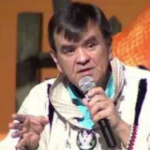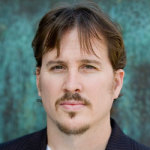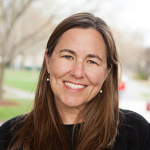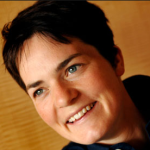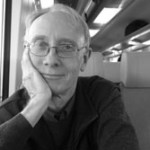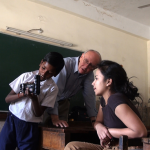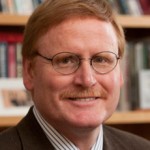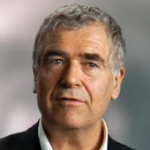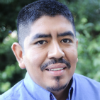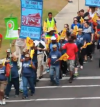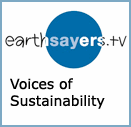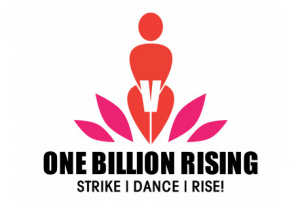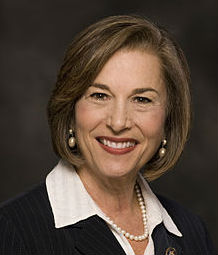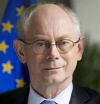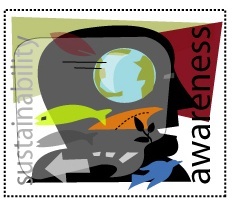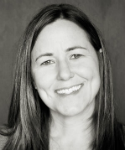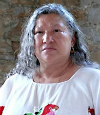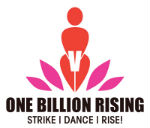The reasons vary and the main one, selling more stuff, fits with the relentless commercialization of the Web, yet social media, especially the four called out above, should be viewed as education channels for growing a movement, educating our citizens, and/or advancing champions and innovators. What I am suggesting is all of the people in an organization who are active on the Web, and that should be EVERYONE, be called upon to become educators using social media and making it part of their work life. It’s about everyone in an organization, especially a purpose-driven one, helping turn on the lights here, there and everywhere across the Web. It doesn’t mean you don’t hire folks to do social media, but you collaborate with them and do your part. Instead of a minority in the organization who use social media, shift to a minority in the organization who don’t. This assumes a small to medium-sized organization with little or no marketing budget and low awareness numbers. 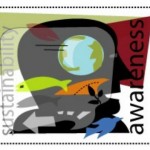
For me social media is about my work and self expression as an online video producer and curator with the objective in life of increasing sustainability awareness. The chief way I do this is to advance leaders from all fields who are advocating sustainability – the integration of planet, people, and prosperity into all decision-making. Advancing leaders means making them more visible through organic search* (more likely to be found) and bringing to the fore not what they write or someone else writes about them, but what they say on video. Social media helps me with our awareness objective for like many founders my objective is both personal and professional.
However, in order to make use of it efficiently and effectively, the key I found was to link up {CONNECT} social media so when I post to one, it’s posted to the others. I picked an entry point (YouTube) that best fists with how I use the Web most of the day so I am leveraging my time while turning on as many lights as possible.
Here’s what I mean.  My primary social media entry point, as a curator of online video, is YouTube. YouTube from my perspective is a social network of video producers (it takes all kinds), rather than Facebook, which is for me mostly friends. Yet when I post a new video or ‘like’ a video on YouTube it shows up on my Facebook timeline so my friends see my work and other videos I like.
My primary social media entry point, as a curator of online video, is YouTube. YouTube from my perspective is a social network of video producers (it takes all kinds), rather than Facebook, which is for me mostly friends. Yet when I post a new video or ‘like’ a video on YouTube it shows up on my Facebook timeline so my friends see my work and other videos I like.
You may have someone on board who does all the content creation and posting, both text and video. Remember, I’m suggesting you collaborate with them to seed the Web, turn lights on, pepper the Web with your influence, thinking, the ideas of your colleagues and the people you admire. In terms of sustainability much of the content is ready-made, it all ready exists in TEDx speeches, University lectures, conference panels, and keynote addresses. Thought leaders and advocates on YouTube are waiting to be “liked” and advanced by you. Paul Hawken entrepreneur, environmentalist and author gets this as do many others with dual responsibilities and tight schedules. I just watched, liked and pinned a video he recommended on Facebook.
YouTube + twitter
I drive traffic to videos on YouTube (our own and those we have liked) through a series of twitter accounts (5), depending on the subject, using the tool, Hootsuite.
+ Pinterest 
Because the Pinterest world is a very visual, well educated group (audience infographic here) and it is easy to use I often “like” a video on YouTube and then “pin it.” Again, I’m doing this with an eye to advancing sustainability thought leaders by increasing their page rankings on Google and adding to their presence in the webstream of consciousness. I also pin videos from Websites I visit during the workday. I would find time to do this no matter my job or organization because in the process I am educated, inspired and motivated and who doesn’t need that these days?
Here’s a recent example of advancing the Canadian and Fine Art photographer Edward Burtynsky, a sustainability advocate. For searches on his name he has good visibility already on the Web, some search traffic (12,000 per month), and ranks in the top three results on a place search, “Canadian photographers.” He’s been shortlisted for the Prix Pictet global award in photography and sustainability. There are ot her less known, hardly visible artists and musicians that we are also advancing and connecting as we identify their video interviews and performances, get referred to them, or Stumble across them.
her less known, hardly visible artists and musicians that we are also advancing and connecting as we identify their video interviews and performances, get referred to them, or Stumble across them.
As an organization, we do this for a wide variety of leaders ranging from artists and musicians to farmers and experts to business and civic leaders. The Edward Burtynsky video on YouTube we curated and added to our site EarthSayers.tv, voices of sustainability. As a curator, this is what I spend most of my day doing – identifying, reviewing and adding to our database sustainability videos. You may have someone else doing this footwork. This is were you come in. Then I “liked” the video on YouTube, pinned it (using a button I added to my browser’s tool bar) to the category, What is  Sustainability?
Sustainability? 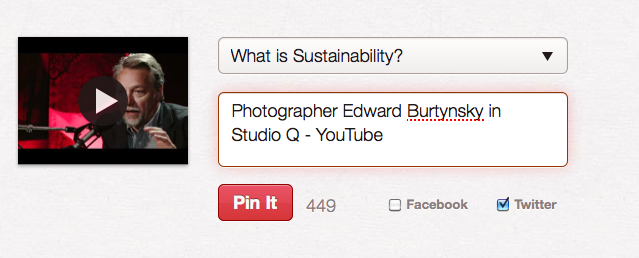 On Pinterest I have set up categories that reflect mostly my interests as a sustainability advocate and which parallel many of the categories, but do not do so exactly as the ones on our Website, EarthSayers.tv.
On Pinterest I have set up categories that reflect mostly my interests as a sustainability advocate and which parallel many of the categories, but do not do so exactly as the ones on our Website, EarthSayers.tv.
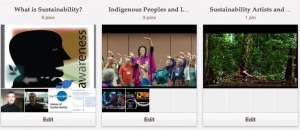
Categories on Pinterest
Remember this activity on social media needs to reflect your interests, your influence in support of the purpose of the organization. On Pinterest each category has its own “landing page” or board as they call it that you can link to in posts, articles, emails when you are educating and informing colleagues and clients and want to reference your own library of sorts. Click here to see a landing page. I’ve also set up Pinterest so that my pin is posted to my twitter @earthsayer. From this perspective, Pinterest is a social network too and for some it is more important than YouTube or Facebook or even LinkedIn. This might be your situation if you are connected to the visual arts, see the value of video and photographs over text, or just find it easy to use.
From this perspective, Pinterest is a social network too and for some it is more important than YouTube or Facebook or even LinkedIn. This might be your situation if you are connected to the visual arts, see the value of video and photographs over text, or just find it easy to use.
Advancing leaders by making them more visible through organic search using social media is an important part of my awareness objective, but it is not the only way nor the primary method to achieve this objective. This blog, Sustainability Advocate, focuses on advancing leaders and seeds the Web and it is particularly effective at reaching a larger audience and turning on a lot of lights.
You may not have time to blog, but opportunities to pin. The point is find at least one tool and the best one for you and contribute to seeding and turning on the lights. Of highest priority is our Website, EarthSayers.tv, a specialized search engine of all curated content, highlighting the voices of 1,300 leaders+ from all over the world. You most likely have a Corporate Website that you can use more effectively to meet your visibility objectives, personal and professional by offering visitors a white paper, how to booklet or embed a video interview from your company YouTube channel. The more the better. Pin it.
Seeding involves multiple keywords/phrases and is why a taxonomy or category system helps everyone in the organization be more effective with their use of social media. Settle on basic terms then allow for tagging based on subjects and interests.
This does look like a lot of work and I don’t want to minimize that it takes time to turn on the lights. But the rewards are great and measurable. If we are to educate and influence, the Web is the place where people are active in the learning cycle.
Creating an environment where everyone contributes to the best of their ability is what social media is really all about. I know its a function, a profession, a specialization, but we need everyone to turn the lights on if we are to be successful at populating the Web with sustainability leaders and content. We need social media professionals to be conductors and organizers and the rest of us to participate.
If you see the advantages lighting up the Web for purposes of education, both personal and professional, and appreciate the value of self expression, then there are ways to do it and tools available so that seeding leverages what you are already doing and produces measurable results for the objectives you set for yourself and the organization. In purpose-driven organizations they are one in the same.
I’m here to help. Ruth Ann Barrett, Sustainability Advocate, July 2, 2013, Cleveland, Ohio. A version of this post was published as part of my marketing blog, Digital Savvy.
* A quick look at the importance of organic search (47%) in terms of Web traffic.
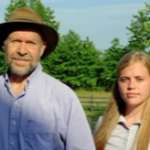 After the last meeting I returned to my office and found in my inbox a newly added video to YouTube entitled, Young People’s Burden, a conversation between the renowned climate scientist Dr. James Hansen of Columbia University’s Earth Institute and his granddaughter Sophie Kivlehan. I ask you to take 17 minutes to listen to Dr. Hansen and Sophie talk about how they both are plaintiffs in the lawsuit filed by Our Children’s Trust against the federal government in their efforts to secure “the legal right to a stable climate and a healthy atmosphere for all present and future generations” the very essence of the sustainability movement.
After the last meeting I returned to my office and found in my inbox a newly added video to YouTube entitled, Young People’s Burden, a conversation between the renowned climate scientist Dr. James Hansen of Columbia University’s Earth Institute and his granddaughter Sophie Kivlehan. I ask you to take 17 minutes to listen to Dr. Hansen and Sophie talk about how they both are plaintiffs in the lawsuit filed by Our Children’s Trust against the federal government in their efforts to secure “the legal right to a stable climate and a healthy atmosphere for all present and future generations” the very essence of the sustainability movement.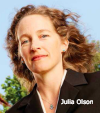 Trust. It is less than twenty minutes and like the Jim Hansen interview I urge you to share it with colleagues and especially your youthful friends and family members.
Trust. It is less than twenty minutes and like the Jim Hansen interview I urge you to share it with colleagues and especially your youthful friends and family members. bove videos are in the EarthSayers.tv special collection, Climate Justice, which compliments our more general climate change and climate change risk special collections. EarthSayers.tv is a specialized search engine to all curated, video content addressing sustainability and advancing those speaking on behalf of Mother Earth and her children.
bove videos are in the EarthSayers.tv special collection, Climate Justice, which compliments our more general climate change and climate change risk special collections. EarthSayers.tv is a specialized search engine to all curated, video content addressing sustainability and advancing those speaking on behalf of Mother Earth and her children.

